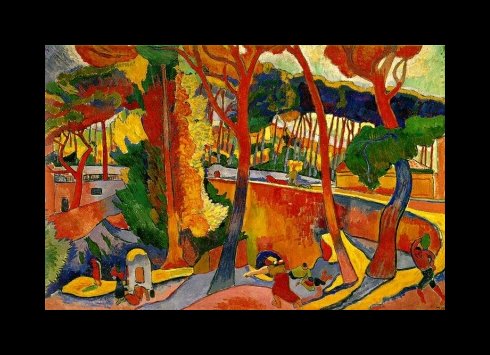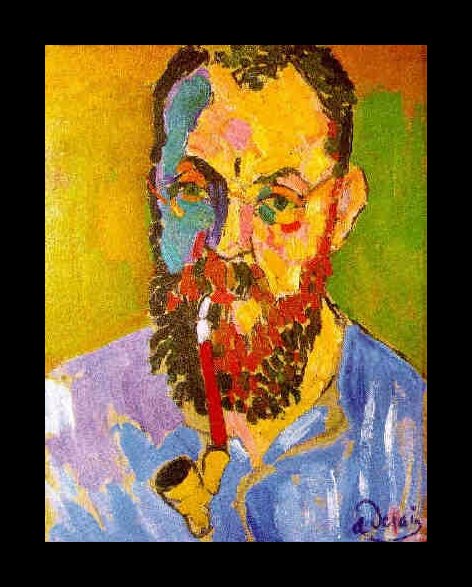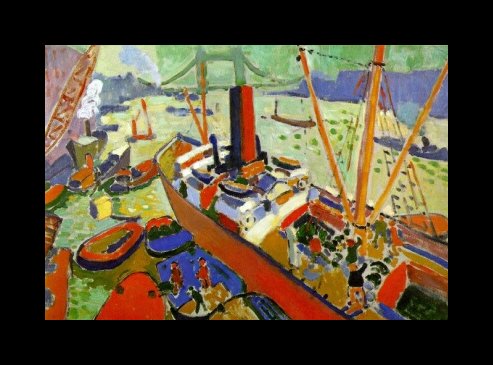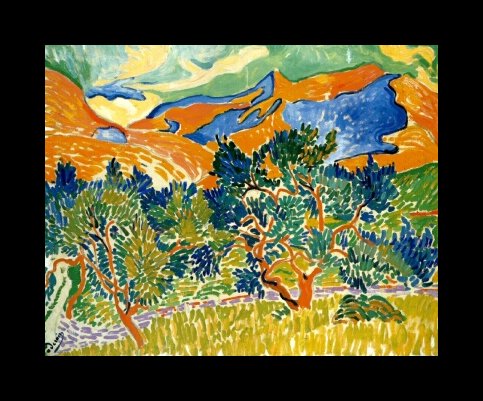Andre Derain (1880- 1954)
Get a Derain Certificate of Authenticity for your painting (COA) for your Derain drawing.
For all your Derain artworks you need a Certificate of Authenticity (COA) in order to sell, to insure or to donate for a tax deduction.
Getting a Derain Certificate of Authenticity (COA) is easy. Just send us photos and dimensions and tell us what you know about the origin or history of your Derain painting or drawing.
If you want to sell your Derain painting or drawing use our selling services. We offer Derain selling help, selling advice, private treaty sales and full brokerage.
We have been authenticating Derain and issuing certificates of authenticity since 2002. We are recognized Derain experts and Derain certified appraisers. We issue COAs and appraisals for all Derain artworks.
Our Derain paintings and drawings authentications are accepted and respected worldwide.
Each COA is backed by in-depth research and analysis authentication reports.
The Derain certificates of authenticity we issue are based on solid, reliable and fully referenced art investigations, authentication research, analytical work and forensic studies.
We are available to examine your Derain painting or drawing anywhere in the world.
You will generally receive your certificates of authenticity and authentication report within two weeks. Some complicated cases with difficult to research Derain paintings or drawings take longer.
Our clients include Derain collectors, investors, tax authorities, insurance adjusters, appraisers, valuers, auctioneers, Federal agencies and many law firms.
We perform Andre Derain art authentication, appraisal, certificates of authenticity (COA), analysis, research, scientific tests , full art authentications. We will help you sell your Andre Derain or we will sell it for you.

While Derain was a fundamental leader in the Fauve style, he often bounced from one style to another, from Fauvism, to Cubism to African art and towards the end of his career, Classicism. Derain covered a wide territory of styles, much to the dismay of his critics. Though gaining no distinct styling of his own, one can always note the pure saturated colors in Derain’s portraits, landscapes and still-lifes.
Perhaps the key to finding a previously un-recognized Derain work is to start by understanding his changes in painting styles. He was so erratic, that one may find it difficult to catalog one of his lost works. If there is ever any doubt, one only has to look for his unusual signature. Typically, he signed his paintings “a. Derain” with a lower-case “a” and a loopy “D” and a large tail on his “n” underlining his whole name.

The son of a famous pastry chef, Derain was born in the outskirts of Paris and initially studied to become an engineer. As a boy, he was obsessed with art and visited the Louvre often. Though Derain was partially a self-taught artist, he also took classes at the Academie Carriere in Paris, where he met Matisse. He later met and became friends with Maurice de Vlaminck, whom he rented a studio with.
From 1900-1904, Derain was in the service and produced little work. To find a piece of art signed by Derain and dated during this time would hold hight artistic and historic value. Upon his return in the fall of 1904, he exhibited along with Matisse and Vlaminck at the Salon d’Automne and Fauvism was officially born. During this time of popularity, Derain met Picasso, and also married his wife, Alice. Picasso would pose as a great influence on Derain in terms of his use of Cubism, and Cezanne would also go on to influence Derain during this time in toning down his color palate.


Among his many works were landscapes, portraits and cityscapes, such as “The Thames and Tower Bridge” in 1906. This painting fully outlines the Impressionistic influence that Cezanne placed on Derain. One of his most famous paintings “Bathers” (1906) is a perfect example of how Derain transitioned from Fauve styling to Cubism. The women in his composition are painted in the Cubist style (squared features), but he still holds on to his Fauvist color palate and tries to emulate the classics. Another London painting “Big Ben” (1906) is painted similar to yet another style, Pointillism. While this painting was done in the same year as the others, no one style is alike.
After World War I, things began to look down for Andre Derain. He fathered two illegitimate children from two different women and his relationship with his wife became bitter. In 1940, he fled his home in Chambouray, only to return and find it occupied by the Germans. He was later propositioned by a member of the German militia to paint a family portrait. Because he accepted, Derain was later accused of being a traitor and a collaborator, and his career and reputation was hurt as a result.
To add insult to injury, the public did not generally like Derains work post World War I. He had returned to Classical styling for good and lost his Fauvist “claws.” One only has to look at one of his paintings from that time, such as “Chevet de la Basilique de Sain Maximin” (1930) to see how tame and classic his style had truly become. He managed to continue his art career by creating stage sets for the ballet and by doing wood-cut illustrations for books. In 1954 he was run down by a truck near his home in Chambourcy and due to his old age, did not survive the shock of the accident. He was 74 years old. Today his work hangs in museums all over the world, like the Museum of Modern Art in New York City.
